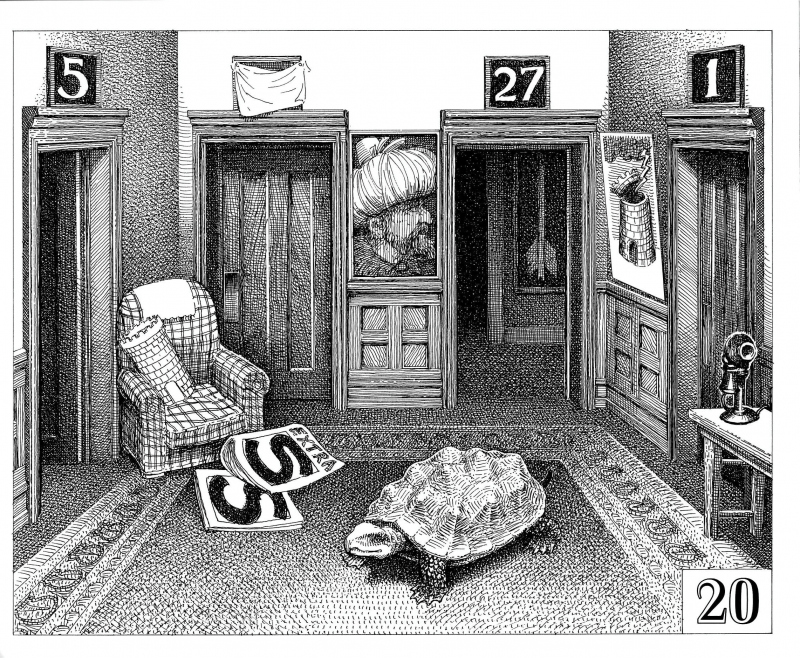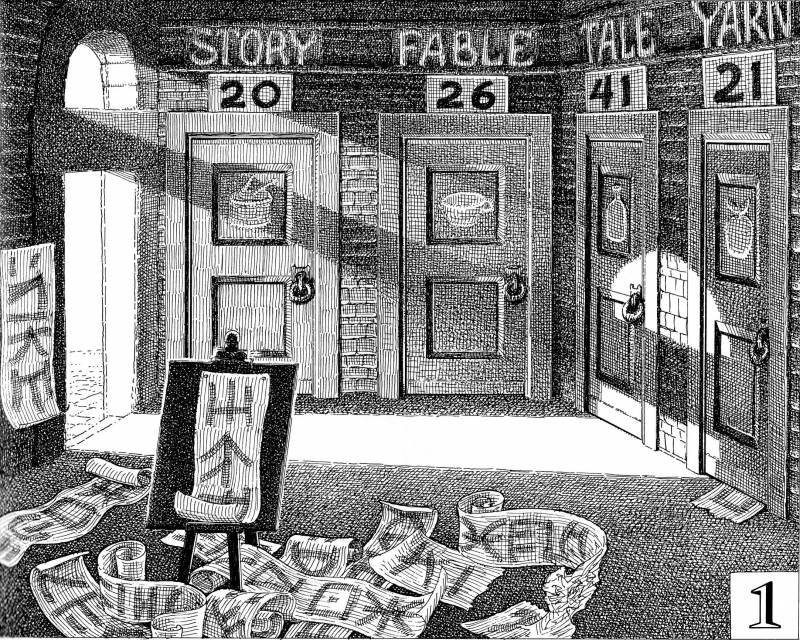When I was still a fresh-faced young tot, I became obsessed with this curious little book called Maze, by Christopher Manson. You also might be familiar with it. Maybe you, too, spent countless hours hiding in the chicken coop with this handful of bound pages, a mere forty-five of them in all. It was not by choice, this obsession—I would have much preferred to be playing Ghostbusters on my friend’s Commodore 64 or watching Three’s Company or Dirty Dancing on our shitbox Panasonic television so as to absorb a pathological sexual tension that I craved yet still didn’t understand. But both of these activities were lightly forbidden, or perhaps heavily curtailed would be a better adjective to describe my parents’ well-intentioned, pseudo-relaxed, post-hippiedom style of child rearing, and so I was left with my crappy wooden toys and my books, and, in particular, Manson’s beguiling Maze.
On the first page of Maze, the reader is invited into an old, sinister labyrinth by a mysterious host who speaks in riddles and looped syntax: “Like all the others they think the Maze was made for them; actually, it is the other way around,” our guide declares at the maze’s entrance. Each page of the book depicts a different room of the maze in an intricate black and white woodcut, and each room has a series of numbered doors that lead to other rooms. When you choose door 20, for instance, you turn to page 20, where a new room with new doors awaits you. Such a simple, beautiful idea for a book. The rooms are laden with peculiar, often-creepy clues that haunted my dreams—torn fedoras, handless statues, an abandoned cane, stuffed birds. When pieced together, the clues are supposed to lead you eventually to the glorious center of the maze, on page 45.

I never arrived at page 45. Legitimately, that is. I was never even sure you could actually do it, but I remember the naughty feeling of turning to page 45, breaking the thread of my path as if boring a hole through the creaky walls of the labyrinth, and wondering how I could ever get there without cheating. What was amazing about this book was the powerful, unbreakable illusion it cast on my tender mind. Something about its perfect containment in a slim little book and its potent suggestion of this vast, three-dimensional labyrinth of silent nightmares caused me to return to its serpentine pages again and again, and, in the end, with much more frequency than...
You have reached your article limit
Sign up for a digital subscription and continue reading all new issues, plus our entire archives, for just $1.50/month.
Already a subscriber? Sign in





